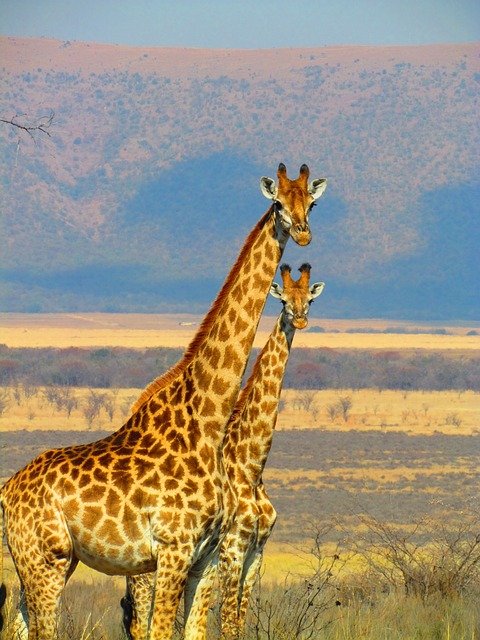Giraffes and Survival on the Barren Continent of Africa

Warm greetings to all visitors to the global Steem community...!
Giraffes and Survival on the Barren Continent of Africa
The giraffe (Giraffa camelopardalis) is one of Africa's most recognizable mammal species, primarily thanks to its striking appearance with its long neck and unique spotting pattern. Although giraffes can be found in a variety of habitats on the African continent, they often have to face enormous challenges in harsh and barren environments. Their adaptations and survival strategies demonstrate the wonders of evolution in the world of wildlife.
Physiological Adaptation
1 . Long Neck: One of the most striking adaptations of the giraffe is its long neck which can reach up to 6 meters. This neck allows them to access high leaves of acacia trees that are difficult for other herbivores to reach. This adaptation is especially important in barren habitats, where food may be limited.
2 . Spotting Pattern: The spotting pattern on giraffes' skin not only gives them an attractive appearance, but also serves as camouflage. This pattern helps them blend into their surroundings, protecting them from predators in open grasslands and forests.
3 . Ability to Regulate Body Temperature: Giraffes have a unique blood circulation system that allows them to regulate body temperature efficiently. The blood vessels in their necks function to cool the blood before it reaches the brain, which helps them survive in hot environments.
Behavior Adaptation
1 . Flexible Diet: Although they prefer to eat acacia leaves, giraffes have a varied diet and can consume different types of vegetation depending on food availability. This allows them to survive even though food may be scarce in the dry season.
2 . Water Drinking Strategy: Giraffes can go a long time without drinking water thanks to their ability to store water from the food they consume. They usually rely on moisture from leaves and plants for their hydration needs. However, when they have to drink, they have to lower their bodies, which makes them vulnerable to predators.
3 . Social Life: Giraffes live in groups called "herds", which provide advantages in terms of protection. Although these groups do not have the complex social structure of some other species, the presence of a group helps them monitor their surroundings and provide early warning of danger.
With all its adaptations, the giraffe is an amazing example of how a species can survive and thrive in challenging conditions. Their success on the barren continent of Africa is a reflection of nature's extraordinary strength and endurance.
Thank you all for your stops, I hope you enjoy it.
Thank you, friend!


I'm @steem.history, who is steem witness.
Thank you for witnessvoting for me.
please click it!
(Go to https://steemit.com/~witnesses and type fbslo at the bottom of the page)
The weight is reduced because of the lack of Voting Power. If you vote for me as a witness, you can get my little vote.
Upvoted. Thank You for sending some of your rewards to @null. It will make Steem stronger.